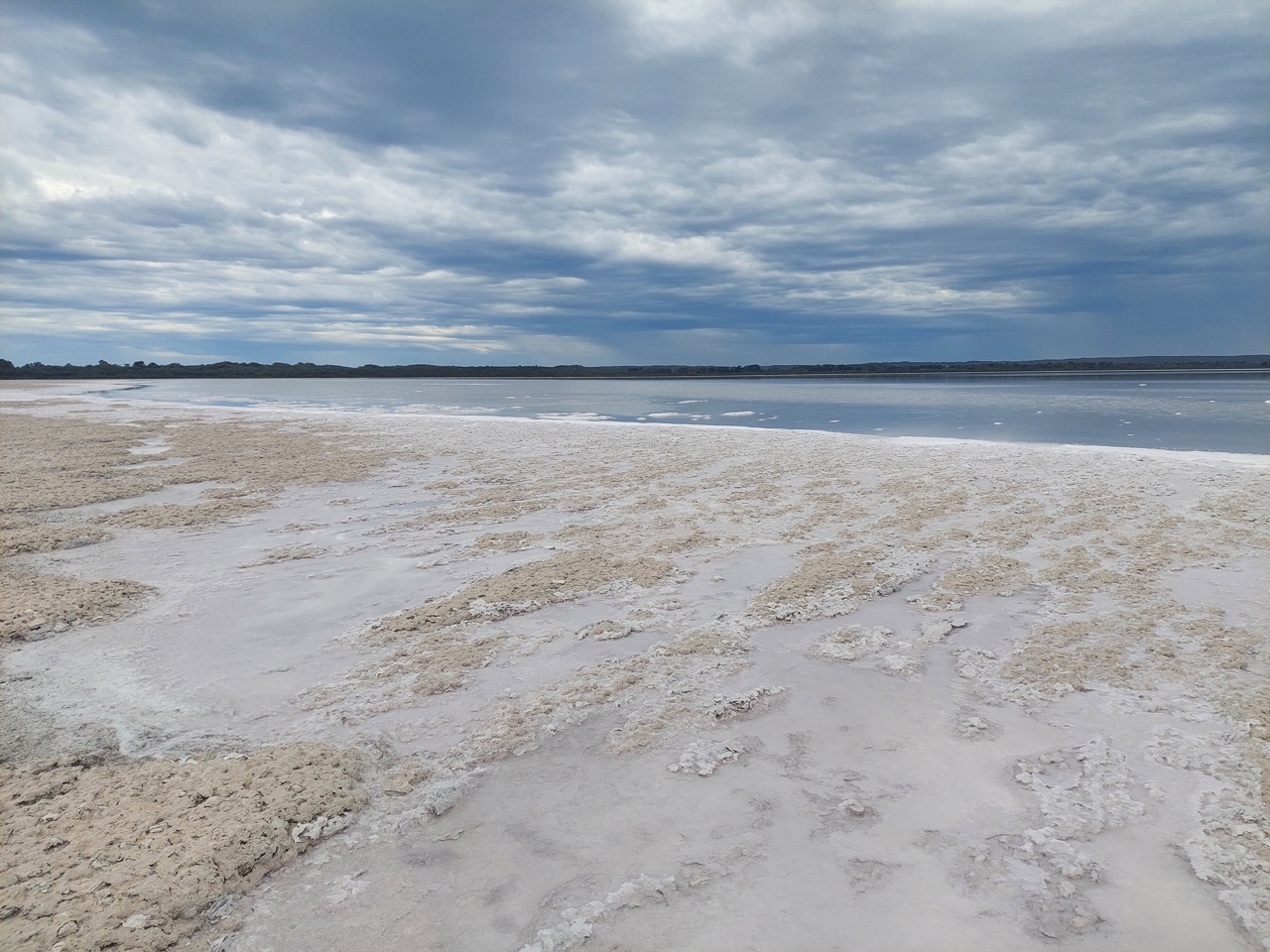Esperance’s once iconic Pink Lake is home to uniquely Western Australian species, but experts suggest the diminished saline levels have had a profound effect on biodiversity and wildlife.
Looking out over the Pink Lake, the receding water reflects a dull grey, a far cry from the bubble gum complexion that attracted swathes of tourists.
It’s been more than 18-years since the lake last glowed pink.
But according to Curtin University salt lake ecology specialist Dr Angus Lawrie, the organisms which produce the pink colour are still there, they just aren’t “active”.

“They won’t necessarily go extinct because some of these organisms can sit in the sediment for very long periods of time,” Dr Lawrie said.
“Before the organism dies, they produce these hardy “resting stages” which are really just eggs that they deposit in the soil and they know the optimal [saline] conditions.
“So when the lake dries out or becomes too salty or not salty enough there’s an insurance policy for the next generation to be able to persist and thrive.”
Dr Lawrie said saline lakes, like the one in Esperance, do not have a lot of biological diversity because most species cannot survive in the “extreme conditions”.
The organisms that do exist include algae and bacteria, which produce the pink colour through natural chemicals, like those which make carrots orange.
The pink pigment protects them from UV light which in turn, gives the lake its pink hue.
These organisms thrive in high saline conditions and when salt levels drop, they no longer synthesise so the lake loses its vibrancy.
Dr Lawrie said Esperance had more salt-lake-specific invertebrates than the rest of the world combined.
And despite the lack of diversity compared to freshwater lakes, he believed the organisms were worth protecting.
“They need salt to live so if your ecosystem becomes fresh, they won’t live there anymore – that is the risk of longevity,” he said.
“If you accept that biodiversity has an inner value — there’s a value to having lots of diverse organisms — then they’re useful to us in that respect.
“Esperance is a really important place for the conservation of these salt-lake organisms.”
It is not just the invertebrates that have been disturbed by the lake’s state.

“When it fills up you get birds that will fly for thousands and thousands of kilometres to take advantage of those really productive ecosystems,” Dr Lawrie said.
“So if you like birds you need the salt lakes to be what they are because they are productive ecosystems.”
The lake began to lose its colour in the mid 1990s and has not been pink since 2007.
A Shire of Esperance report suggested salt harvesting was the major cause of salt dilution, but it said other factors like development, road infrastructure and climate change may add to the problem.




